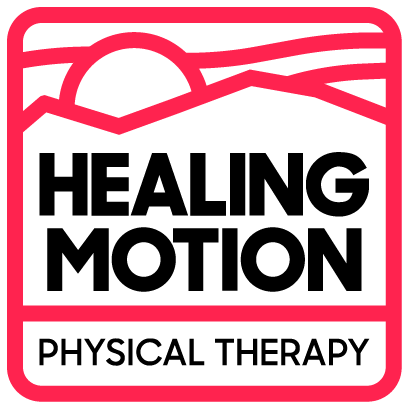If there is one thing that was made clear during the COVID-19 pandemic it’s that we value human life. And appropriately so! Our life is something to cherish and protect as much as we can.
As of November 2024, the top 10 causes of death for the last three years (1-3):
| Rank | Cause of Death | 2022 | 2021 | 2020 | 2019 |
| n/a | All Causes | 3,464,231 | 3,458,697 | 3,383,729 | 2,854,838 |
| 1 | Heart Disease | 702,880 | 695,547 | 696,962 | 659,041 |
| 2 | Cancer | 608,371 | 605,213 | 602,350 | 599,601 |
| 3 | COVID-19 | 186,552 | 416,893 | 350,831 | n/a |
| 4 | Accidents (unintentional) | 227,039 | 224,935 | 200,955 | 173,040 |
| 5 | Stroke | 265,393 | 162,890 | 160,264 | 150,005 |
| 6 | Chronic respiratory disease | 147,382 | 142,342 | 152,657 | 156,979 |
| 7 | Alzheimer’s Disease | 120,122 | 119,399 | 134,242 | 121,499 |
| 8 | Diabetes | 101,209 | 103,294 | 102,188 | 87,647 |
| 9 | Kidney Disease | 57,937 | 54,358 | 52,547 | 51,565 |
| 10 | Liver Disease | 54,803 | 56,585 | 51,642 | 47,919 |
| 11 | Influenza/Pneumonia | 47,052 | 41,917 | 53,544 | 49,783 |
| n/a | Potential Preventable (Non-Covid) | 1,216,864 | 1,104,073 | 1,112,071 | 1,053,672 |
| n/a | 80% Preventable (Non-Covid) | 973,491 | 883,258 | 889,657 | 842,938 |
Notice that heart disease is by far the leading cause of death. According to the World Health Organization (WHO), 80% of heart disease deaths can prevented! (3). We are extrapolating, but many strokes, respiratory, and diabetes related deaths can be prevented as well. Disclaimer, there isn’t research showing 80% of those can be prevented. We did not include COVID-19 or some of the other causes of death that likely can be prevented to some extent with improved health. With that, we feel pretty confident about the 80% preventable number at the bottom of the graph. That suggests that nearly 900,000 deaths per year in the United States could potentially be prevented!
How is it preventable you might ask? Pretty simple, health lifestyle choices.
- Sleep well.
- Eat well (that includes avoiding drugs).
- Exercise well.
- There are some other areas of health that should be considered. See our 6 Pillars of Health blog for more details.
In general, the best prevention is applying the above to work toward the Fitness side of the Sickness – Wellness – Fitness continuum. See the video below for more info.
Disclaimer: we understand that there are many barriers making those three things difficult for people, but the evidence is so strong supporting those areas of life, we have to fight daily to get better at them. Between your Primary Care Physician, Physical Therapist, Registered Dietician, and Mental Health Therapist you can have an excellent team to help you access the resources you need. For more motivation on how to gradually get better, check out our Life Hack: Just Get a Little Bit Better Every Day blog for great visualizations.
In case you need other reasons to exercise in addition to cardiovascular and cerebrovascular disease prevention, check out the other references listed below demonstrating how exercise reduces risk for depression, metabolic syndrome, infection susceptibility, and all cause mortality (4-8).
For more info on why these areas are important, recommendations concerning them, and professionals to help you improve, check out our 6 Pillars of Health blog.
For more resources locally and online related to these areas during the COVID-19 pandemic, check out our COVID-19 Health, Wellness, and Fitness Resources blog.
Human life is valuable. Every single one. Let’s do everything we can to save and improve the quality of each and every life.
Let’s play offense!
- Sleep well
- Eat well
- Exercise well
Again, see our 6 Pillars of Health blog linked above for more details on all of those.
Let’s play offense against preventable causes of death that have been taking lives for too long.
Stronger Together,
Dr. Dane Happeny, PT, DPT, OCS, CF-L1
Doctor of Physical Therapy
Board Certified Orthopedic Specialist
CrossFit Level 1 Trainer
References
- Ahmad FB, Cisewski JA, Anderson RN. Provisional Mortality Data — United States, 2021. MMWR Morb Mortal Wkly Rep 2022;71:597-600. DOI: http://dx.doi.org/10.15585/mmwr.mm7117e1external icon. Date Accessed 09/28/2022.
- Leading Causes of Death – United States, 2020. https://www.cdc.gov/nchs/fastats/leading-causes-of-death.htm. Date Accessed 09/28/2022.
- Xu J, et. al. Deaths: Final Data for 2019. National Vital Statistics Report. 2020; 70(8):1-86. https://www.cdc.gov/nchs/data/nvsr/nvsr70/nvsr70-08-508.pdf. Date Accessed 09/28/2022.
- WHO. The challenge of cardiovascular disease – quick statistics, 2016. Available at: http://www.euro.who.int/en/health-topics/noncommunicable-diseases/cardiovascular-diseases/data-and-statistics (accessed 10 October 2016).
- Gordon BR, McDowell CP, Hallgren M. Association of efficacy of resistance exercise training with depressive symptoms: meta-analysis and meta-regression analysis of randomized clinical trials. JAMA Psychiatry. 2018;75(6):566-576. doi:10.1001/jamapsychiatry.2018.0572. https://jamanetwork.com/journals/jamapsychiatry/fullarticle/2680311
- Bakker EA, et al. Association of Resistance Exercise, Independent of and Combined With Aerobic Exercise, With the Incidence of Metabolic Syndrome. Mayo Clin Proc. 2017;92(8):1214-1222. doi: 10.1016/j.mayocp.2017.02.018. https://www.ncbi.nlm.nih.gov/pmc/articles/PMC5546793/
- Infection Susceptibility: The Lancet (2020) Systematic Review and Meta Analysis of 55 publications: “Regular physical activity should be promoted to decrease the risk of community acquired infection and infectious mortality disease, strengthen the potency of immunisation programme and lessen the impact of pandemics such as the recent COVID-19” AMA citation coming
- Zhao M, Veeranki SP, Magnussen CG, Xi B. Recommended physical activity and all cause and cause specific mortality in US adults: prospective cohort study. BMJ. 2020;370:m203. doi: 10.1136/bmj.m2031. https://www.bmj.com/content/bmj/370/bmj.m2031.full.pdf

